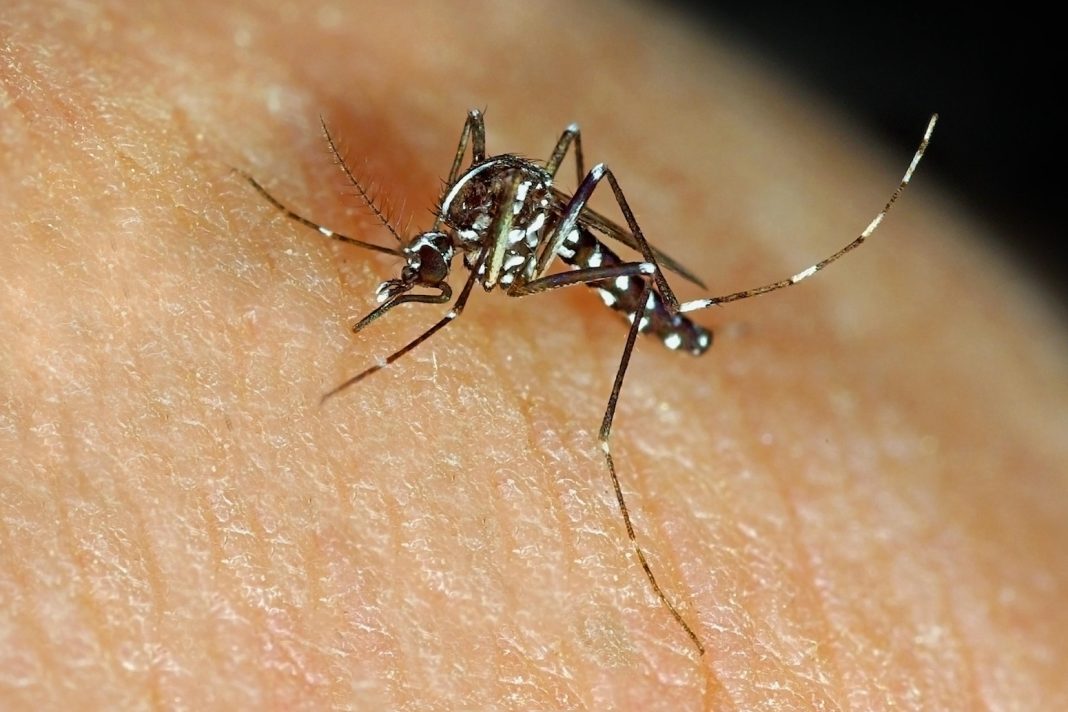Ahead of the Paris Olympic Games this summer, the organising committee was concerned about two principal diseases: Covid, which Europe is fully familiar with, and dengue fever.
Dengue, a climate-sensitive infectious disease spread by mosquitoes, is traditionally considered a “tropical” infectious disease.
But authorities closely monitored and prepared for dengue in Paris due to its potential to spread in the increasingly warm climate of the region.
A great deal of progress has been made over recent decades in the fight against some infectious diseases, such as malaria, yet this progress is at risk due to climate change.
Mosquitoes carrying the dengue virus are now a threat in France and other European countries because of warmer summers.
Extreme weather events and warming temperatures are giving many infectious diseases opportunities to expand to new regions, putting billions of people at risk.
Climate-sensitive infectious diseases
Any infectious disease whose transmission and spread are influenced by changes and variations in climate and weather is considered a climate-sensitive infectious disease (CSID).
These include diseases that are spread by air, food, water or vectors.
The CSIDs that have received most media attention are vector-borne. They are caused by pathogens that have been transmitted to a human by a vector, such as a snail, fly, tick or mosquito.
Vector-borne diseases include dengue, Zika virus, malaria, Chikungunya and yellow fever.
Ideal breeding conditions
Almost all vector-borne diseases have a climate dimension. Both pathogens – the microorganisms that cause the disease itself – and vectors are very sensitive and highly responsive to the environments they live in. Changes in temperature and rainfall can have significant impacts on their spread.
In 2024, global temperatures reached record highs. These extreme conditions have been linked to a surge in dengue fever cases worldwide and contributed to the spread of other infectious diseases.
Pathogens and vectors typically thrive in warmer climates – in part because there is a longer season in which the vectors can live, breed and pass on the disease.
Higher temperatures change the behaviour of insect vectors. Adult mosquitoes reproduce more quickly and bite more frequently in warmer weather.
Pathogens also multiply faster within the vector in warmer conditions. This means there is a higher concentration of the disease-causing pathogen transmitted within insect bites, increasing the chance of infection. In turn, this leads to quicker and more intense disease outbreaks.
Temperature is only one part of the picture. Changes in rainfall patterns contribute to creating ideal breeding conditions for mosquitoes and other vectors too.
Pakistan, for example, has had increasingly heavy monsoon seasons – linked to climate change – that result in severe flooding. When the floods recede, stagnant water pools are left creating ideal breeding sites for some mosquitos.
Flooding in 2024 has seen 1.3m cases of malaria recorded in Pakistan so far, with cases likely to continue rising. In 2021, there were 500,000 cases recorded in total.
Unequal risks
Vulnerable populations are typically at greater risk from CSIDs – including children, the elderly, pregnant women and people with weakened immune systems.
Additionally, communities with limited healthcare, inadequate housing and poor sanitation are more susceptible to outbreaks of CSIDs due to reduced capability to prevent, detect and treat infections.
Currently, lower-income countries – particularly those in tropical regions – bear the higher burden of CSIDs. Tropical regions are more exposed to vector-borne diseases for several reasons – from the warm and humid climate and the existence of disease-carrying insects to inadequate housing, infrastructure and healthcare.
This combination of factors leads to heightened risk and less resilience against the spread of such infectious diseases in many tropical countries.
However, as temperatures rise, cooler regions, such as Europe, are also becoming more vulnerable to climate-sensitive diseases.
Warmer temperatures increase the geographic range where vectors – such as mosquitoes and ticks – can survive and breed.
This pattern is exemplified by Lyme disease, an illness transmitted by ticks. Increasingly prevalent throughout the UK, it is also steadily moving into northern areas of Canada and even the Arctic – where it was previously absent as ticks could not survive the cold temperatures.

Due to climate and land-use change, ticks can now spread Lyme disease into these new areas and could lead to year-round tick seasons, which could be expected in areas of Scotland and elsewhere.
Reducing risks
While curbing the spread of CSIDs requires global action to slow climate change, there are adaptation measures that can be put in place now.
These measures are particularly important in lower-income countries, where the impacts of climate change on health are most acutely felt.
Wellcome is funding 24 research teams from both climate and health backgrounds in 12 countries to develop new digital tools to respond to the emerging threat of CSIDs.
Integrating climate data with health information can improve the prediction and management of disease outbreaks to, for example, create better early warning systems.
For example, a research team based in Vietnam is developing a new digital tool called E-DENGUE to predict dengue outbreaks as early as two months in advance. It will be tailored for the Mekong Delta region of Vietnam.
This will allow public health practitioners to be one step ahead of dengue outbreaks, giving them time to mobilise resources and concentrate interventions to the most affected areas.
Reducing the ability of mosquitoes to transmit viruses is another promising approach being used to regain control of CSIDs.
The World Mosquito Program is releasing mosquitoes infected with Wolbachia, an extremely common bacterium that occurs naturally in 50% of insect species. This bacterium was found to reduce the ability of tiger mosquitoes to transmit viruses such as dengue and Zika.
However, extreme heat can reduce the effectiveness of this method, highlighting the need for heat-resistant strains of the Wolbachia bacterium in future control programmes.
Recent advances in vaccine development also offer hope. A vaccine for dengue fever has been approved in several countries and more effective vaccines are under development.
For malaria, the vaccine Mosquirix has been recommended by the World Health Organization for use in moderate- and high-transmission areas, and a second-generation malaria vaccine, known as R21/Matrix-M, has demonstrated high efficacy in trials. This summer, Ivory Coast became the first country to roll out R21/Matrix-M.
These vaccines represent strides forward in preventing these diseases and complement other control measures.
Addressing the most acute problems
Climate change is reshaping the global landscape of infectious diseases, with vector-borne diseases at the forefront of this shift.
As temperatures rise and extreme weather becomes more severe, the risk of disease outbreaks increases – both for regions where a disease is already endemic and for those that are experiencing it anew.
Countries that have made the smallest contribution to greenhouse gas emissions are often the ones most affected by climate change’s health impacts and the least well equipped to deal with them.
Ensuring that these countries have access to tools and resources and the support needed to strengthen their health systems will help stem the spread of CSIDs. But much more will be needed to ensure that they can adapt to and mitigate the wider health effects of climate change.
Sharelines from this story


